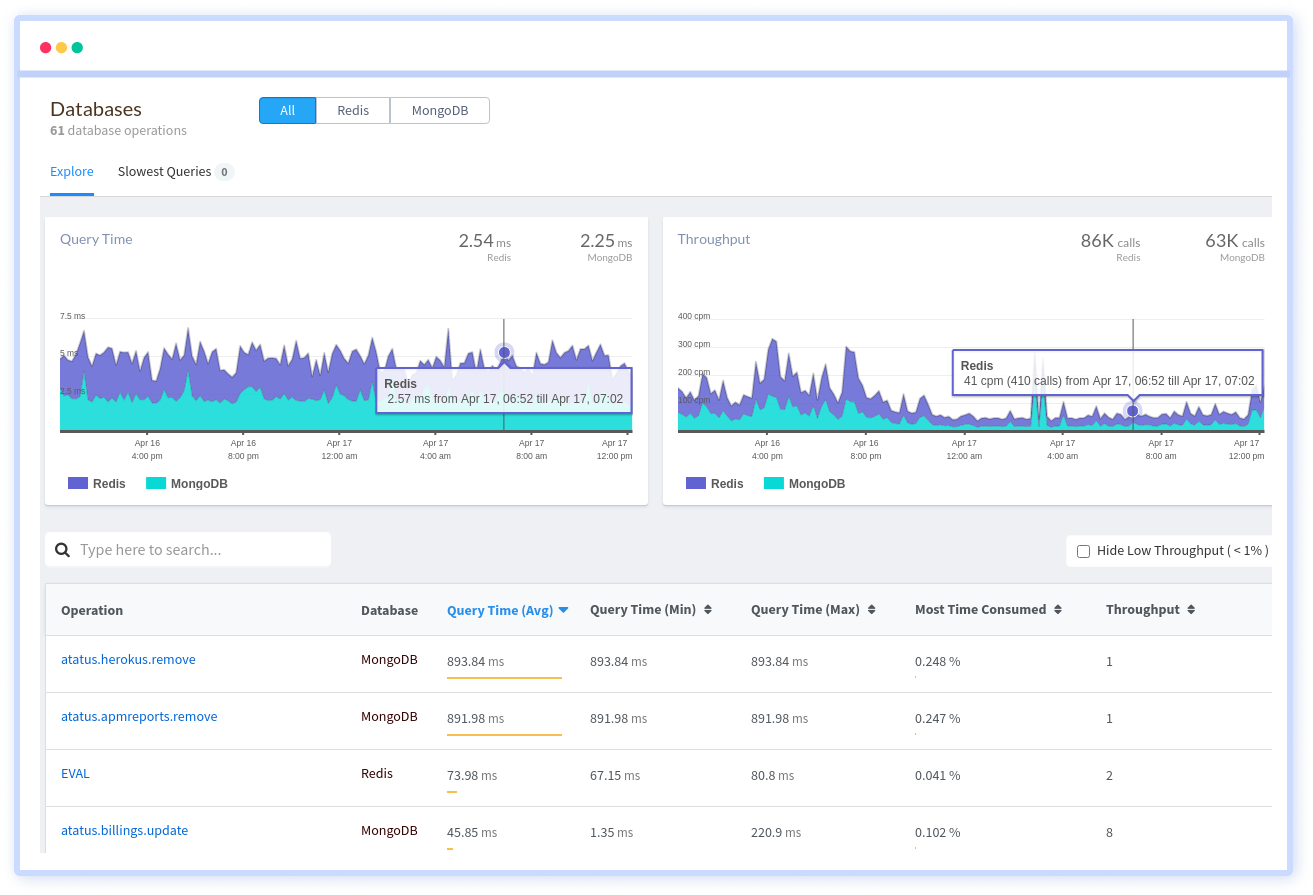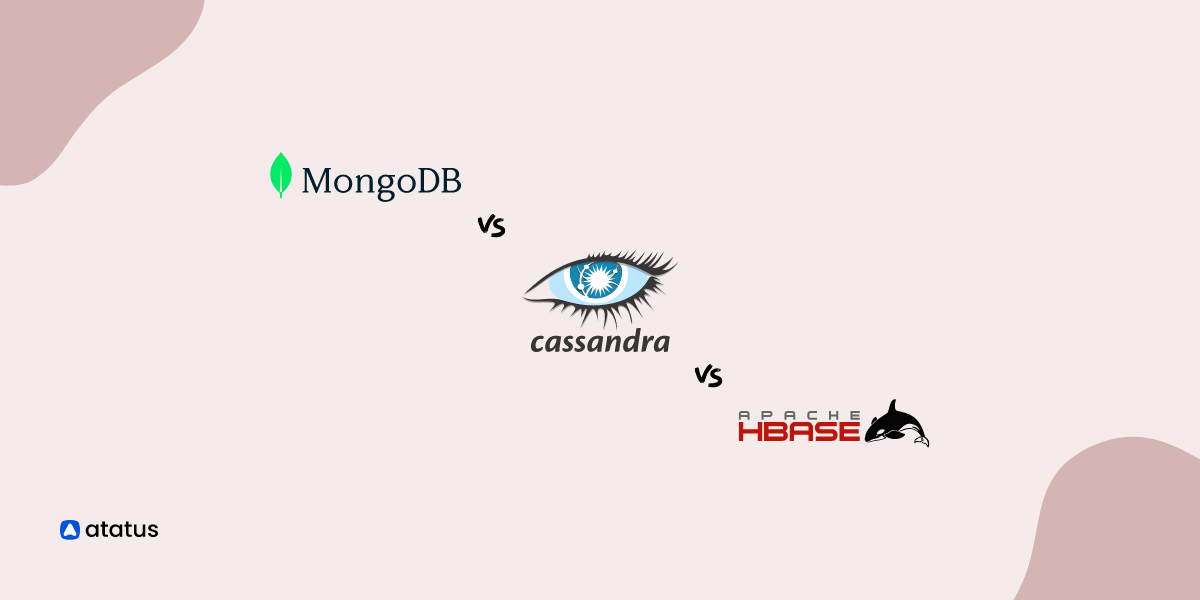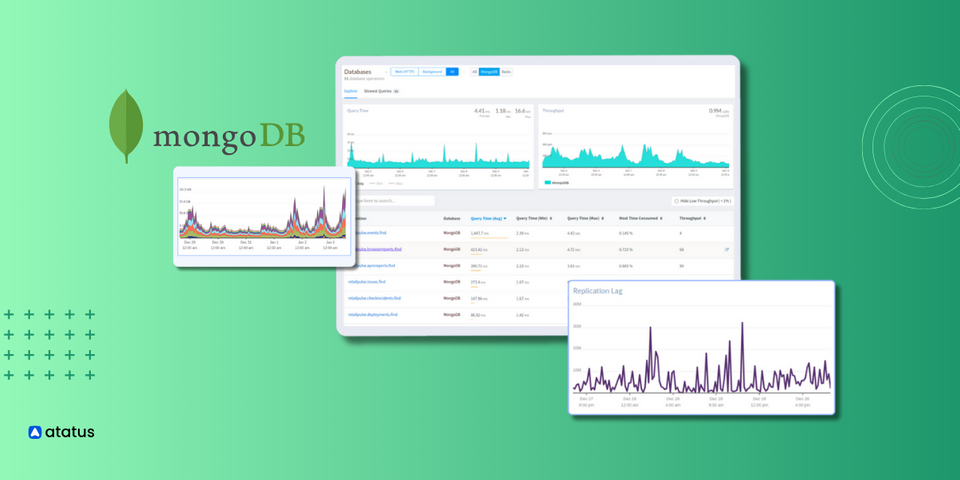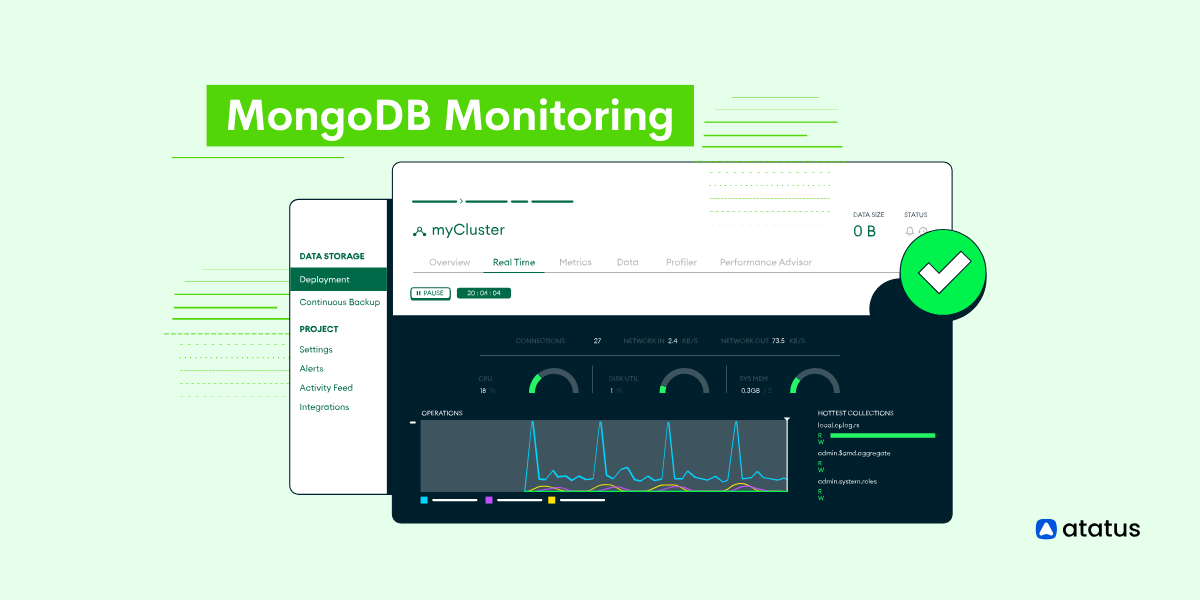MongoDB vs. Cassandra vs. HBase: A Comparison
Databases are organized collections of data stored in a server or a system elsewhere and can be retrieved upon need. They can be managed and even updated as and when the need arises. This data can be in the form of texts, images, integers, or multimedia files.
SQL uses a standard query language to manage relational databases. You must have heard of MySQL, PostgreSQL, Oracle, and Microsoft SQL servers. SQL databases are known for their ability to handle complex queries, data consistency, and data integrity.
On the other hand, NoSQL Databases opt for a no-table data storing format. They go by key-value pairs, documents, graphs, and column-family methods. They show high scalability, availability, and flexibility. We would be discussing three of the popular NoSQL databases in this article.
The choice between SQL and NoSQL databases largely depends on the specific use case and requirements of the application. SQL databases are generally a good choice when working with structured data that requires complex querying, whereas NoSQL databases are better suited for unstructured or semi-structured data that requires high scalability and flexibility.
Table Of Contents
NoSQL Databases: An Overview
NoSQL databases are a class of databases that do not use traditional relational database management systems (RDBMS) and are designed to handle large volumes of unstructured or semi-structured data. They provide a flexible data model that can accommodate a wide variety of data types and structures, making them ideal for storing and managing data that is not easily organized into tables.
There are several types of NoSQL databases, each with its own strengths and weaknesses. Some of the most popular types include - document databases, key-value databases, column-family databases and graph databases.
Some of the advantages of NoSQL databases include their ability to scale horizontally, meaning they can handle large volumes of data by adding additional nodes to a cluster. They are also highly flexible and can accommodate a wide range of data types, making them ideal for applications that handle large volumes of unstructured data.
However, NoSQL databases can also have some drawbacks. Because they do not use a fixed schema, data consistency can be more difficult to maintain.
Additionally, NoSQL databases may not provide the same level of transactional support as traditional relational databases, which can make them less suitable for applications that require strict data integrity.
Popular NoSQL Databases
We have seen the importance of NoSQL databases in handling data files and their tremendous scalability. Here, we will take a look at some of the popular NoSQL Databases which have become administrators' favorites.
Cassandra
Cassandra is a popular NoSQL database that is designed for scalability, high availability, and fault tolerance. It was originally developed by Facebook and is now managed by the Apache Software Foundation. Cassandra is particularly well-suited for use cases that require high write throughput and the ability to handle large amounts of data.
Advantages of Cassandra:
- Cassandra is designed to scale horizontally, which means it can handle large amounts of data by adding more nodes to the cluster. This makes it ideal for applications that need to store and manage a lot of data.
- It is designed to be highly available, which makes data always accessible even if some nodes in the cluster fail. This makes it suitable for applications that require continuous availability.
- Cassandra is optimized for write-heavy workloads and can handle a large number of concurrent writes. It is also capable of handling high read throughput, making it ideal for applications that require fast access to data.
- Cassandra's data model is flexible and can handle a wide range of data types, including structured, semi-structured, and unstructured data.
Disadvantages of Cassandra:
- Cassandra is a complex database system that requires significant expertise to set up and maintain. It can be challenging to configure and manage, particularly for organizations without a dedicated team of database administrators.
- Cassandra uses its own query language (CQL), which can be difficult to learn for developers who are used to SQL-based databases.
- Cassandra also uses a distributed architecture, which can make it difficult to maintain data consistency across the cluster. This can be particularly challenging when dealing with transactions that involve multiple nodes.
- Cassandra's data model requires careful consideration and planning, as it does not support all of the features of traditional relational databases. This can make it difficult to migrate existing applications to Cassandra.
MongoDB
MongoDB is another popular open-source NoSQL database that is known for its flexibility and scalability. It is a document-based database that stores data in JSON-like documents, making it easy to work with and integrate with modern web applications.
Advantages of MongoDB:
- With MongoDB, you can add more nodes to a cluster to handle large amounts of data.
- MongoDB's document-based data model is highly flexible and can easily accommodate changes in data structures, making it well-suited for agile development and rapid prototyping.
- Its native indexing and sharding capabilities make it possible to achieve high performance even with large amounts of data.
- MongoDB has a simple and intuitive query language, making it easy to learn and use for developers.
Disadvantages of MongoDB:
- MongoDB's flexible schema can make it difficult to ensure data consistency and integrity, which can be a problem for applications that require strict data validation.
- MongoDB does not provide the same level of transactional support as traditional relational databases, which can be a drawback for some applications.
- MongoDB's indexing and caching mechanisms can lead to high memory usage, which can be a problem for applications with limited resources.
- MongoDB does not support joins between collections, which can make it difficult to model complex relationships between data.
HBase
HBase is also a popular column-oriented NoSQL database that is designed to run on top of Hadoop Distributed File System (HDFS). It is an open-source, scalable, distributed database that is designed to handle large amounts of structured and semi-structured data.
Advantages of HBase:
- The HBase cluster can be scaled horizontally by adding more nodes to handle large volumes of data.
- HBase uses Hadoop's HDFS to provide high availability and fault tolerance. Hadoop's HDFS replicates data across multiple nodes, ensuring that data is always available even if a node fails.
- It is optimized for high-speed read and write operations, making it ideal for applications that require low latency and high throughput.
- HBase uses a flexible data model that can accommodate a wide variety of data types and structures.
Disadvantages of HBase:
- Setting up and configuring HBase can be complex and time-consuming. It requires a deep understanding of Hadoop and its ecosystem.
- HBase is not well-suited for ad-hoc queries or analytics. It is designed to handle high-speed data writes and reads and is optimized for use cases that require low-latency data access.
- HBase is designed to provide eventual consistency, which means that there may be inconsistencies in the data until the system fully converges. This makes it less suitable for applications that require strict transactional support and data integrity.
- HBase does not provide a SQL interface, making it less accessible to developers and analysts who are not familiar with Hadoop and its ecosystem.
Comparison Table
| Characterstics | Cassandra | MongoDB | HBase |
|---|---|---|---|
| Programming language of database | Java | C++ | Java |
| Supports languages | C#, C++,Erlang, Go, Haskell,Java, Node.js, Perl, Php, Ruby, Scala, Python | C#, C++, Erlang, Haskell, Java, Javascript, Perl, Php, Python, Ruby, Scala | C, C#, Groovy, Java, Php, Python, Scala |
| Architecture | Wide column store | Document store | Wide column store |
| Server OS | freeBSD, Linux, OSX, Windows | Linux, OSX, Windows, Solaris | Linux, Unix, Windows |
| Availability/ Consistency focus | Availability | Consistency | Consistency |
| Replication | Masterless ring | Master-slave | Master-slave |
| Edition | Community, third-party support | Community(free version), Enterprise format | Community |
| Uses | Sensor data, messaging system, e-commerce websites, fraud detection for banks | Operational intelligence, product data management, CMS, IoT, real-time analytics | Online log analytics, Hadoop, Mapreduce, write heavy applications |
| Customers | McDonald, Reditt, Google, Netflix, GitHub, Instagram | Adobe, Ebay, Google, Facebook, Cisco, SAP | Salesforce, Adobe, Yahoo, Xiaomi, Netflix |
| Data schema | Schema-free | Schema-free | Schema-free and Schema-definition |
| Typing | Yes | Yes | Can bring in your own types, AVRO |
| XML Support | No | No | No |
| Secondary indexes | Restricted | Yes | No |
| SQL | SQL-like SELECT, DML and DDL, | Read-only SQL queries (via MongoDB) | No |
| APIs and other access methods | Proprietary protocol Thrift |
Propreitary protocol using JSON | Java API, RESTful HTTP API, Thrift |
Wrapping Up!
Databases are a boon to system administrators, whether you are a startup constructing data-intensive applications or a big enterprise receiving gobs of information piles every day. They containerize all these spreads and give us a neat handling choice. It becomes easier to manage and filter out pieces of information.
NoSQL especially elevates the capability of a database since it works on unstructured and semi-structured data. Also the increased scaling capacities and flexibility of being a language-independent platform.
MongoDB is the most popular choice among all the NoSQL databases considering its high availability and fast read/write speeds. But if you are looking for scaling and flexibility you might want to consider Cassandra.
Before committing to any one of these, make a thorough analysis of what your program needs.
Database Monitoring with Atatus
Atatus provides you an in-depth perspective of your database performance by uncovering slow database queries that occur within your requests, and transaction traces to give you actionable insights. With normalized queries, you can see a list of all slow SQL calls to see which tables and operations have the most impact, know exactly which function was used and when it was performed, and see if your modifications improve performance over time.

Atatus benefit your business, providing a comprehensive view of your application, including how it works, where performance bottlenecks exist, which users are most impacted, and which errors break your code for your frontend, backend, and infrastructure.
#1 Solution for Logs, Traces & Metrics
APM
Kubernetes
Logs
Synthetics
RUM
Serverless
Security
More





